An unconventional challenge
posted on
Jul 01, 2009 03:27PM

Developing large acreage positions of unconventional and conventional oil and gas resources

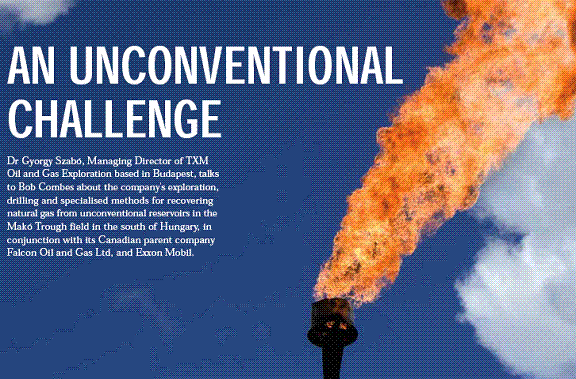
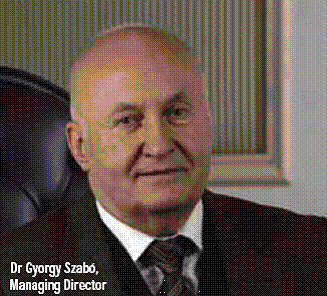
TXM Oil and Gas Exploration is a wholly-owned subsidiary of the Canadian company Falcon Oil & Gas Ltd. TXM was formed in 2005, and has its operational headquarters in Budapest. The parent company focuses on the exploration and development of large areas of unconventional and conventional oil and gas resources in countries where there is a high regional demand for energy and an existing infrastructure that permits rapid delivery of oil and gas to market.
A key find A key achievement in the brief history of TXM was the discovery by Falcon of a fractured oil and gas underground source in the Makó Trough area in south central Hungary. This culminated in an award to the company from the Hungarian Mining Authority in May 2007, of a long-term production license that was applied for in October, 2006. This covers 245,775 net acres in this large so-called basin-centered gas accumulation (BCGA). The receipt of the production license was the final step required for TXM to secure its right and ability to implement its drilling and development plan for this large hydrocarbon resource. These explorations led to an independent evaluation report that was completed in March 2006, which estimated the potentially recoverable contingent resources of fossil fuels in the production license area to be 40 trillion cubic feet of gas and 100 million barrels of oil. DrSzabó explains: “This entailed 1,100 square meters of three dimensional seismic exploration, and the drilling of six HPHT (high pressure high temperature) test wells to a maximum depth of six kilometers, the construction of a high capacity gathering pipeline, and a detailed testing and evaluation programme.” The wells were installed in conjunction with Crosco Integrated Drilling &Well Services Co Ltd. TXM had to temporarily abandon one of these exploratory wells –Makó-6 – after it had been operating for some two years, due to unfavourable drilling conditions, particularly high pressure and temperature, as well as gas contamination. This complex and potentially dangerous operation was successfully completed in conjunction with Cabot Specialty Fluids, while at the same time setting new records for both the deepest packer ever set in Hungary at 5,198 meters, and for the highest temperature of 250°C for the use of caesium formate brine – a hygroscopic material added to minimize release of organic hydrocarbon material into the environment.
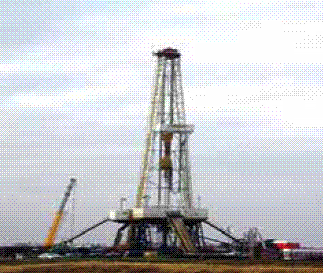
Safety in numbers
In April, 2008, Falcon entered into a joint venture with ExxonMobil. This Production Development Agreement (PDA) undertakes further commercial evaluation and development of the resource in an area covering 75 per cent of the production license. An area equivalent to 184,300 acres. Falcon has an interest of thirty-three per cent in this PDA, with ExxonMobil and MOL sharing the remaining interest. The PDA calls for a total investment by Exxon Mobil and MOL of US$ 300 million in several stages to earn their interest, including an initial payment of US$25 million to Falcon/TXM, and for ExxonMobil/MOL to spend US$50 million to conduct an initial work programme to test one or more of the existing well-bores or drill one or more new wells for such tests. Under the PDA, assuming that the results of the initial work programme are satisfactory, Exxon can move on to the appraisal stage in which it will pay Falcon an additional US$50 million and spend US$100 million in the Makó Trough. After successfully completing this stage Exxon/MOL can move to the development phase, in which they spend another US$75 million. In December 2008, an amendment to the PDA was issued which states that the parties will use reasonable efforts to combine their respective exploration licenses and mining plots to form one unit consisting of all or part of the Makó Trough, and that they will maximize the size and yield of the gas and oil reserves, particularly by expanding the area for drilling new wells. These agreements are clearly another milestone in the history of TXM and its parent company, and were the result of extensive efforts, initiated in mid-2007, to identify a strategic partner that would be able to support and enhance.
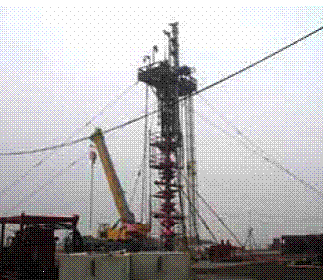
TXM’s exploration and development efforts. Falcon’s website notes: “We are very pleased that we were able to reach agreement with ExxonMobil, a company which brings to the table all the financial, technical and operating expertise necessary to pursue the completion, testing and evaluation of this resource, and then to maximize value if we are able to commercialize this opportunity.” In addition, the joint venture is a culmination of a long association between ExxonMobil and Hungary, as DrSzabó recalls: “We have just celebrated the 70th anniversary of the founding of the petrochemical industry in Hungary, which was formally launched by the President of ExxonMobil in 1938.” DrSzabó stresses that, “our license is only for the recovery of gas from unconventional reservoirs within the site.” He goes on to explain that, unlike the situation with conventional sources of gas, “recovery involves tapping into deep gas deposits by using specially-engineered equipment capable of exerting high levels of hydraulic pressure to release the gas.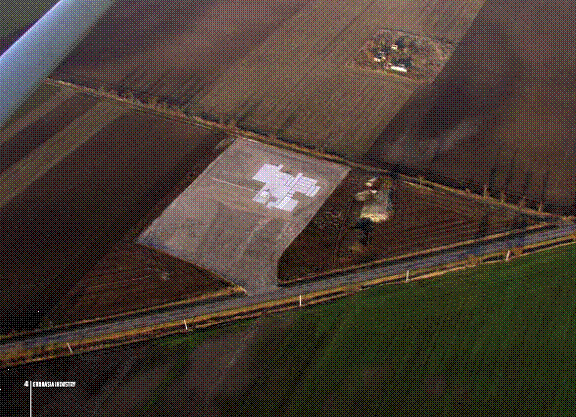
”Unconventional gas reservoirs are ones that are of low permeability, producing mainly dry natural gas. For an unconventional gas reservoir to produce equivalent levels of gas to those resulting from a conventional reservoir, it is necessary to drill many wells. In addition, large hydraulic pressures are used to fracture the reservoir so as to stimulate it to produce commercially-viable gas flow rates and volumes. The release of gas from unconventional sources usually occurs over longer time periods than occur with conventional sources. DrSzabó explained further:
“The basic methods used were established in the USA many years ago, and a third of gas production in North America is based on the technology. However, we have adapted the techniques according to the local conditions to increase the efficiency of draining the deposits of thick gas.”
Falcon recently announced that ExxonMobil, as the operator, has started the drilling operations in the Joint Venture area at the beginning of 2009, with the purpose of testing the hydrocarbon potential of the Szolnok formation as part of the initial work programme in the PDA area. This well is located approximately 1,000 meters from the Makó 6 well. TXM will be very busy over the next two years in recovering the gas from the Makó Trough site on a commercial basis.
In the meantime, the company will be searching for other potential oil and gas reservoirs in Hungary and also, as DrSzabó explains, “we shall be focusing on exploration of the Pannonian (Carpathian) Basin, a topographically discrete region of central Europe encompassing parts of several other countries, including Serbia, Croatia and Bosnia, where we have obtained encouraging signs of more deposits of fossil fuels.”
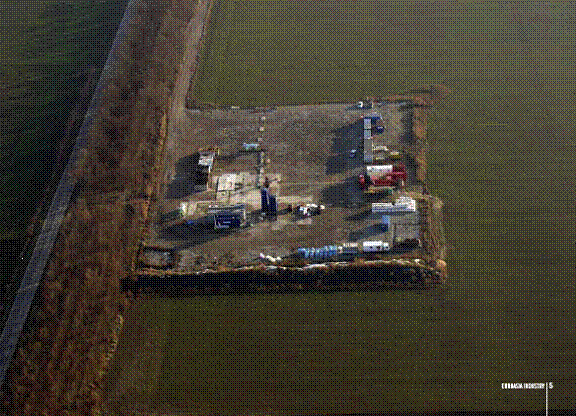
A team approach
TXM has stringent quality control and safety procedures that are modeled on those operated by ExxonMobil. These include a requirement for all employees and contractors throughout the company to participate in safety teams that conduct safety surveys, contribute to incident investigations, suggest ongoing improvements in safety procedures, and perform risk assessments of all main procedures and activities before they take place. In addition, inherent safety measures are built into the company’s facilities and equipment, and there is a philosophy of product stewardship that requires full disclosure of any risks and health implications associated with the company’s products to workers, third parties and the public.
These were readily adapted to be relevant to TXM’s requirements as they follow harmonized EU regulations. In addition, TXM carefully monitors its impact on the environment, as part of an overall policy of conducting its business in a manner that considers both the environmental and economic needs of the communities in which it operates. DrSzabó explains:
“We report to the relevant Hungarian authorities, such as the Mining Bureau and the Energy Bureau, on a daily basis.” He continues: “The company is accredited for ISO 9000 and ISO 14000 and also by the API (the American Petroleum Institute) and the IADC (the International Association of Drilling Contractors) Well Control Committee.

Dealing in complexities
Understandably, TXM’s research and development is focused on improving the methodology for recovering gas from unconventional reservoirs. DrSzabó illustrates this point by noting: “We collaborate with more than five different research institutes which undertake analyses of core samples for determining various reservoir parameters, including petrochemical analysis, environmental data and gas stream analysis. All this requires a significant amount of investment in research, particularly studies on the permeability and porosity characteristics of the bedrock in the deposits. Unconventional gas recovery is always more complex than conventional exploration methods. The latter techniques are usually designed to discover hydrocarbons in sub-surface reservoirs where the oil and gas contents have been trapped following migration from a site remote from where wells are sunk into the reservoir.
This contrasts with unconventional reservoirs in which the gas is located deep within the original source rock and where drilling takes place. This means that, in conventional gas reservoirs, there is usually a higher concentration of free gas to be recovered.”
DrSzabó believes that, “the economic recession should not affect our activities too much in view of our strong partnerships, and specialist activities.” In addition to its own expertise, TXM benefits from substantial support provided by Falcon and ExxonMobil whose staff includes some of the world’s top oil and gas experts with several decades of highly successful unconventional and conventional natural gas drilling experience. DrSzabó concludes by noting: “We have just invested more than US$300million in finding new energy sources, and developing a database of information on our exploration findings, which we are sharing with our partners.”
This would seem to be a wise move to enable the company to continue being a major contributor to the energy industry in Hungary by finding – and obtaining licenses for the recovery of – gas from reservoirs by using unconventional methodologies.
